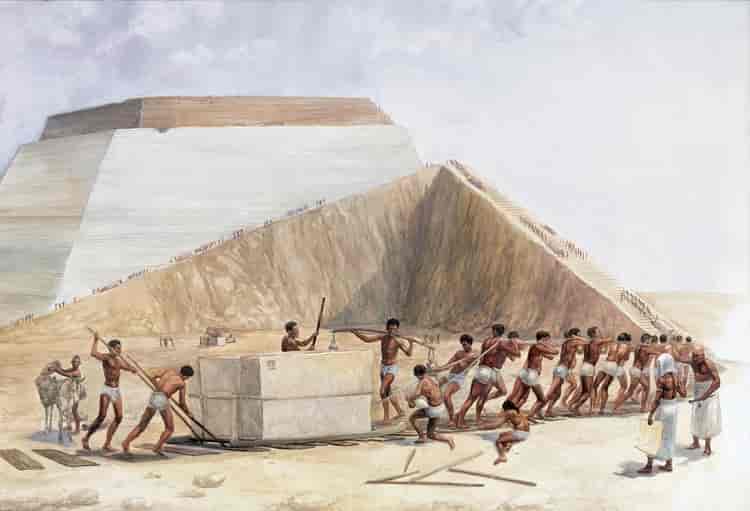A question that has always raised conspiracy theories, the construction of the Egyptian Pyramids was not that complicated.
The fact that the construction of the Egyptian pyramids is difficult to explain becomes a plate full of conspiracy theories.
At the time of the construction of the Great Pyramid of Giza (2,560 BC), the ancient Egyptians did not use locomotion with wheels to help in the fitting of blocks with up to 10 tons on top of each other.
And yet the thing was done, stood still and was the tallest building in the world for 3,800 years, until the construction of Lincoln Cathedral in England. How, after all, was that possible?
The technology that gave rise to the Egyptian Pyramids is very old, and the first known creator of these monuments is the architect Imhotep, who made the oldest of all, that of Djoser (2648 BC).
Before it, pharaohs were buried in mastabas, underground tombs covered by rectangular piles of blocks and with sloping walls, which continued to be used over millennia by ancient Egyptians who did not belong to royalty.
Imhotep simply thought about building a small mastaba on a big one, then a smaller one on that one, creating six layers, in a building with an impressive 62 meters high and 125 meters wide. It survives today.
The idea was reproduced by Djoser’s successors, Sekhemkhet (2645 BC) and the mysterious owner of a pyramid known as “Buried Pyramid”, from mid-2630 BC.
In Sneferu’s reign (2613-2589 BC), an innovation was made: the smooth, or true, pyramid.
A single sloping wall was built from top to bottom and covered with polished limestone, which gave the work a white and shiny appearance. The limestone construction collapsed over the years, leaving only the skeleton that is seen today.
Sneferu was so fond of pyramids that he ordered the construction of at least three of them. And that passion for the pyramids passed on to the next generation: his son Khufu, who reigned between 2551 and 2528 BC, decided to create the greatest of all, which would never be overcome.
And today we know this pharaoh not by his Egyptian name, but by the way the Greeks pronounced it two thousand years ago: Cheops.
Exact records have never been found about the construction of the Egyptian pyramids, but we can glimpse some indications.
Where the material came from is no mystery: the quarries in the complex of the great pyramids were found just over 100 meters from them. In an equally short distance, channels connected to the Nile brought other materials and supplies.
The question of “how the stones got there” is considered answered by most historians with a tip left a few centuries later: the tomb of Governor Djehutihotep (1900 BC) shows a colossal statue being dragged by 172 workers.

In front of the path, some of them throw water to facilitate the slide. Experimental archaeologist Denys Allen Stocks estimated that a mere eight workers would be needed to pull a 2.5-ton average block with a sled.
However, how were these materials lifted over 100 meters high? The most accepted answer to this mystery comes from the writings of a Greek historian from the 1st century BC.
Diodorus Siculus believed that the stones were carried through ramps of sand, built gradually as the pyramid increased.
The exact shape of the ramps – whether they were straight or zigzagged around the monument – is still open to interpretation.
Source: VITOR LIMA, aventuras na historia











0 yorum: